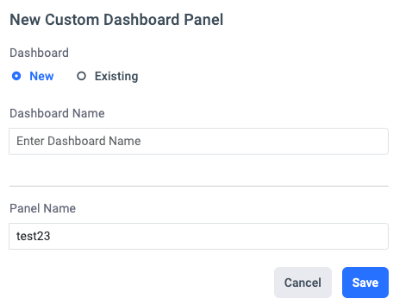Budgets
Overview
Budget Monitoring is designed to address the challenges associated with managing cloud costs in dynamic and ever-evolving cloud environments. Whether you're in FinOps, a finance professional, or a member of a development team, our platform offers robust tools for budgeting, monitoring, and forecasting to optimize your cloud expenditure. Budget monitoring is available for individual cloud provider and in multi-cloud.
Cloud Budget Monitoring consists of four components:
- Monitor: The ability to set budgets and track them at multiple levels for daily/monthly periods.
- Forecast: A critical aspect of cloud management that enables your organization to plan, allocate resources wisely, control costs, and optimize your cloud infrastructure to meet business objectives effectively.
- Report: The actual spending or forecasted data can be visualized and provided to all stakeholders periodically.
- Alert: Get alerted when budgets are at risk using a threshold compared to the actual spend or forecast.
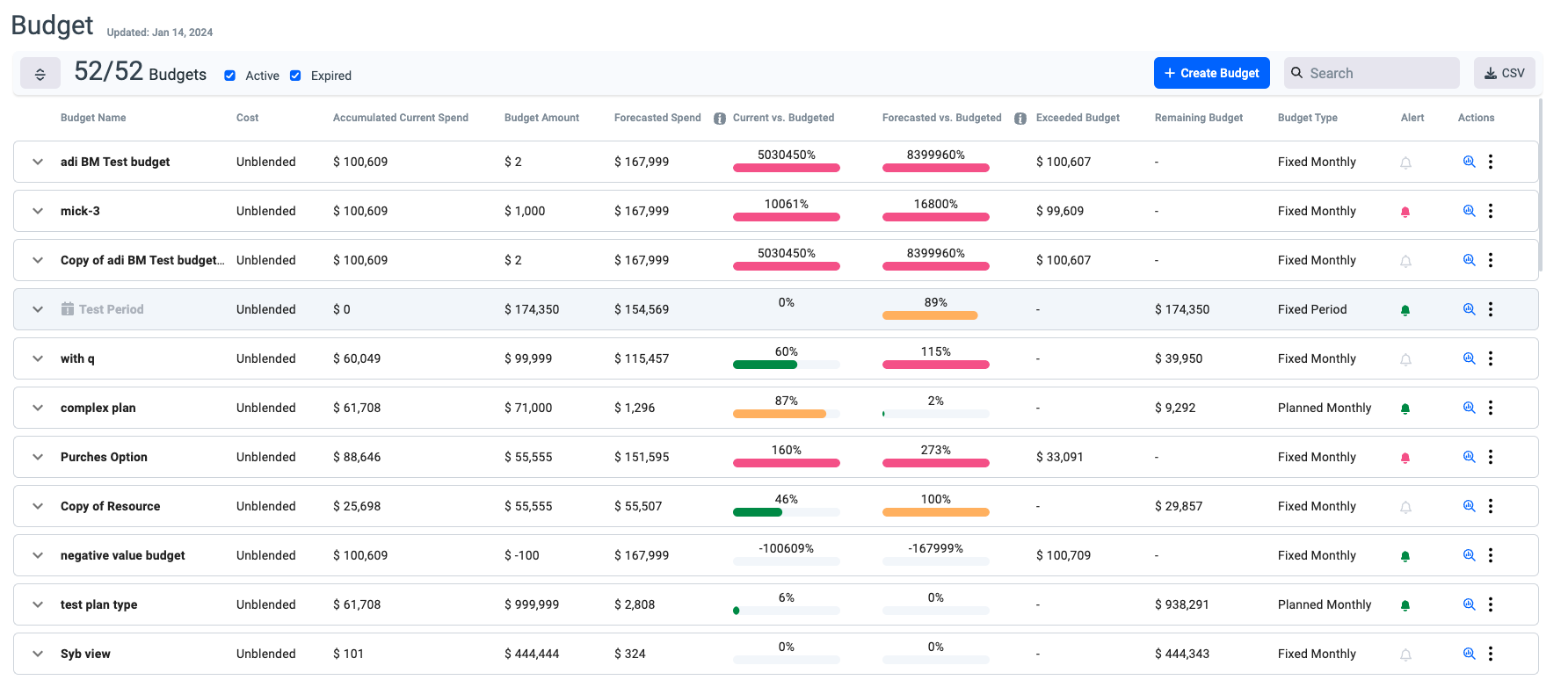
Creating a budget
- From the left menu, navigate to the Monitoring > Budget page.
- To create a new budget and budget alert, click

- The budget creation process has three main steps:
-
Details & Filters: In this step, configure the following:
-
Set the Budget Name - this field is mandatory and should be unique.
-
Set the Budget Description - this field is optional, the description is presented in the budget details presentation.
-
Select the Cost Basis - the selection is mandatory, choose from: Amortized, Net Amortized, Unblended.
-
Set the filters - if no filter is selected then the budget will reflect the total spend.
-
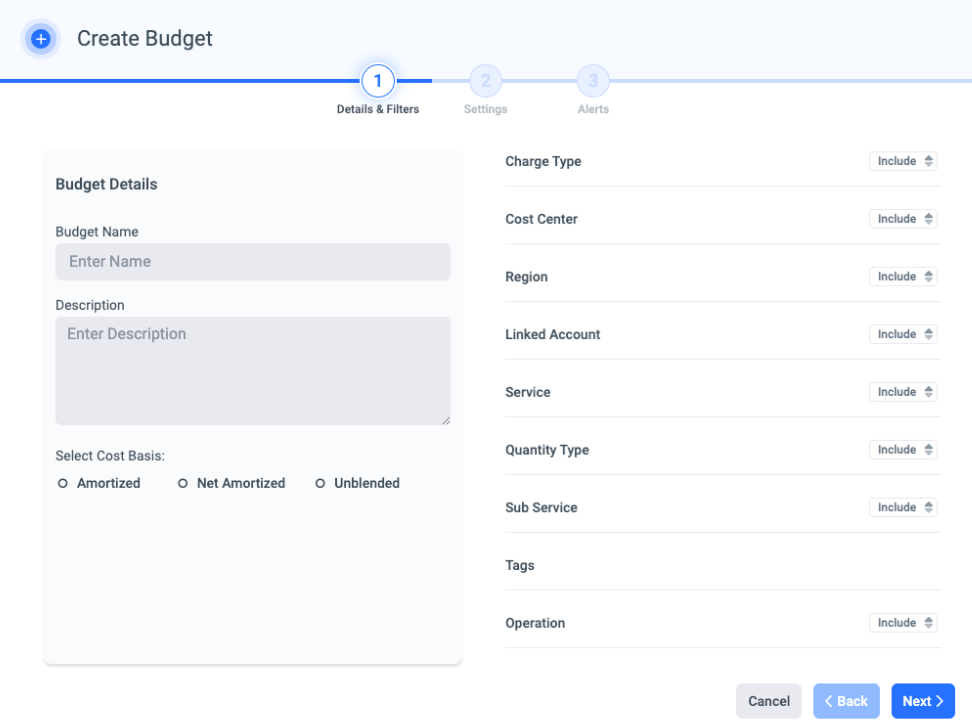
Details & Filters in Multi-cloud budget:
- Filters: The available filters are those that are available in the multi-cloud cost & usage as the common denominator across CSPs.
- Cost Basis: As Amortize cost is available only for AWS the Amortize cost selection is relevant only for AWS, to select Azure Amortize cost please choose the relevant Amortize payer account.
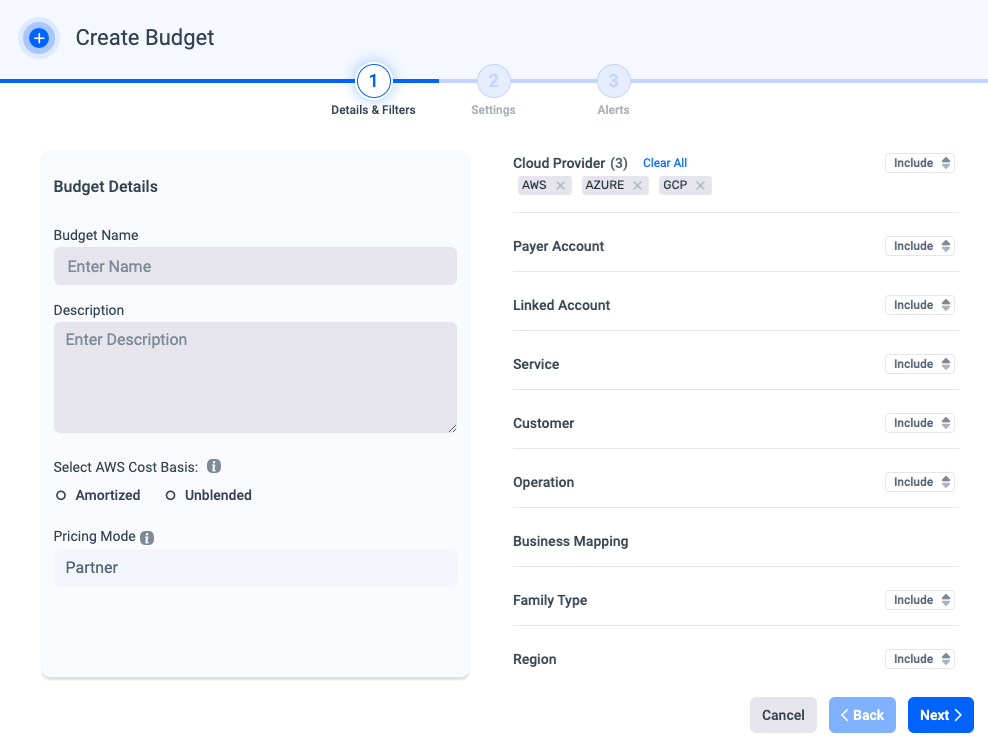
-
-
Settings: In this step, configure the following:
- Set the Budget Period - the period is monthly, and the default is 1 year onward.
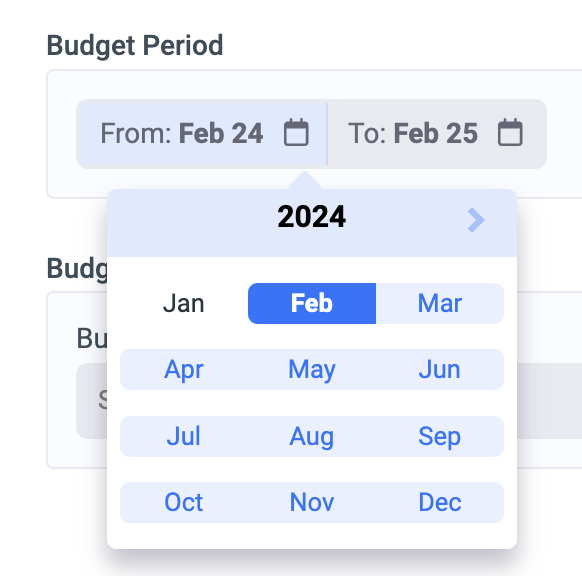
Notea. A historical start month can be set for all budgets except for expired budgets.
b. A historical end month can't be set.
- Select the Budget Type, from one of the following:
-
Fixed Monthly Budget: Tracks spending against a fixed amount per month. Sets the fixed budget amount to be tracked.

-
Rolling Budget can be set for 'Fixed Monthly Budget'.
-
Planned Monthly Budget: Set your budget amount for each month.
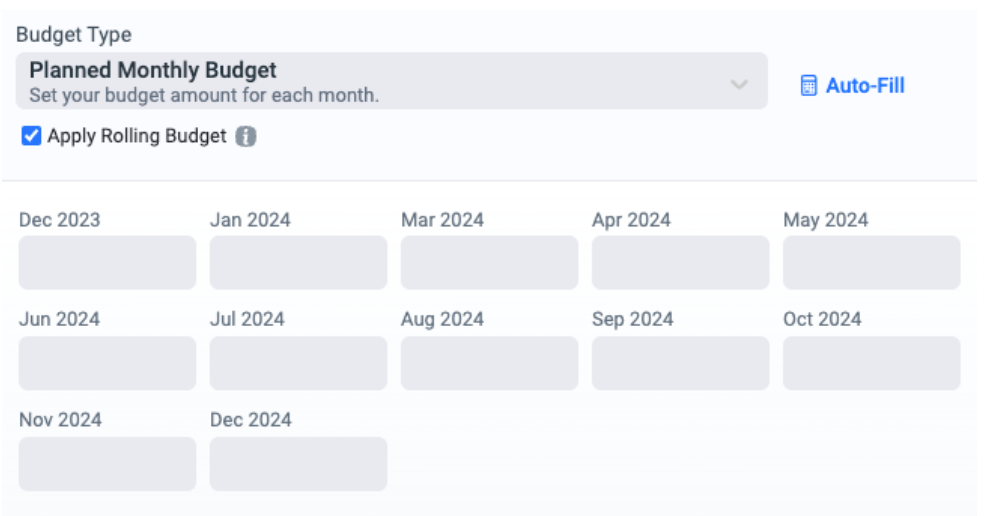
You can click Auto-Fill to assist with the monthly value population. Select from one of the following methods: -
Divide amount over period divides the amount you’ll set equally per month.
-
Fix amount per month sets the amount you’ll define per month.
-
% Calculated monthly increase sets the initial budget and the monthly growth increase, and all the monthly budget amounts will be populated accordingly.
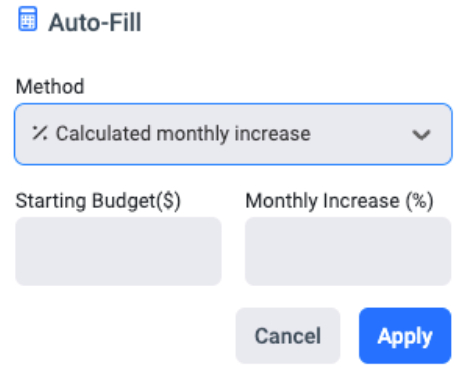
-
Rolling budget can be set for 'Planned Monthly Budget'.
-
- Fixed Period Budget: Tracks spending against a fixed set number of months.
-
Alerts: In this step, you can configure one or multiple alerts:
-
Select the Alert Granularity:
- Daily - Applicable for ‘Fixed Monthly’ and ‘Planned Monthly’ budgets. Create a daily alert that compares the actual daily spending against the daily budget, where the daily budget is calculated by dividing the monthly budget by the number of days in the calendar month.
- Monthly - Applicable for ‘Fixed Monthly and ‘Planned Monthly’ budgets. Create a monthly alert that compares the actual MTD spend against the monthly budget.
- Total budget period - Applicable for ‘Fixed Period’ and ‘Planned monthly’ budgets. Create an alert that compares the actual MTD spend against the overall budget for the total period (e.g 6-month period).
-
Set the Alert Threshold (%) - Select if the alert should be triggered if the spend value is greater than the value you define.
-
Set the alert trigger from one of the following:
- Forecasted Spend - an alert will be triggered if the threshold breaches Umbrella's forecasted spend.
- Actual Spend - an alert will be triggered if the threshold breaches the current spend.
-
Configure the recipient(s) - multiple emails can be configured, each separated by a comma.
-
Add additional alerts by clicking Add additional alert.
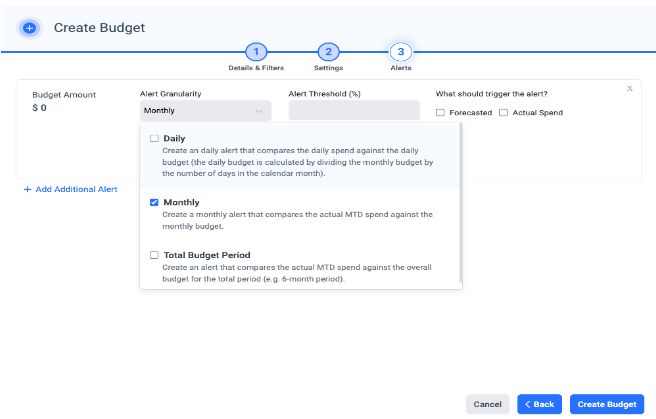
-
Alerts are supported also for the multi-cloud budget.
-
-
Click Create Budget to complete the creation of your budget.
-
Budget Detailes & Editing
You can view the list of existing budgets in your account along with a summary table of the current budget status.
Single Cloud Provider Budget

Multi-Cloud Budget

The following fields are shown in the budget table summary:
-
Budget Name: The budget name configured per budget.
-
Cloud Provider:
-
Cost: The cost basis configured per budget.
-
Accumulated Current Spend: The budget accumulated cost. Note the following:
- For ‘Fixed Monthly’ budget types this represents the MTD spend.
- For ‘Planned Monthly’ budget types, this represents the MTD spend.
- For ‘Fixed Period’ budget types, this represents the starting period TD spend.
-
Budget Amount: The budget amount that was set for each month/period.
-
Forecasted Spend: The current monthly/period spend forecast.
-
Current vs. Budgeted: The progress bar presents where your budget stands, comparing your actual spending, monthly or period for a 'Fixed Period' budget.
-
Forecasted vs. Budgeted: The progress bar presents where your budget stands, comparing your forecasted cost, monthly or period for a 'Fixed Period' budget.
-
Exceeded Budget: The exceeded spend amount for the budget period (monthly/period).
-
Remaining Budget: The remaining spend amount for the budget period (monthly/period).
-
Alert: Shows the alert rules and their status defined on the budget. (Not relevant for the Multi-Cloud budget).
-
A green bell indicates the alert condition wasn't met.

-
A red bell indicates the alert condition was met.

-
A greyed-out bell indicates no alert has been defined for this budget.
NoteIf there are several alert rules, the higher severity defines the primary indication. If any of the rules have been exceeded, the indication will be red.
-
-
Cost & Usage Explorer: Click
 and continue your investigation in the cost & usage explorer, the explorer will be filtered according to the budget filtering and present cost data per a given period. Date presentation in CUE per budget type:
and continue your investigation in the cost & usage explorer, the explorer will be filtered according to the budget filtering and present cost data per a given period. Date presentation in CUE per budget type:- Period- Present the period starting date up to 4 months forward, as there's a daily limit.
- Monthly-Present the current month and the last month for expired budgets
- Planned Monthly-Present the current month and the last month for expired budgets
-
Expired budgets are budgets whose end date has passed, they will be marked as
 .
. -
Actions: Click
in the Actions column to do the following:
- Edit an existing budget - Select Edit to update all budget fields: Name, description, cost type, filters, budget period, budget type, Rolling budget, Budget amount per month, and alerts.
- Expired budgets aren't editable.
- Duplicate an existing budget - Select Duplicate to duplicate the entire budget settings or update any field. The name should be unique.
- Delete an existing budget - Select Delete to delete the budget and its history.
- You can also export the full budget list to CSV format by clicking CSV, located in the top right corner.
Budget Daily/Monthly Views
This section describes how you can view your budget from a daily or monthly perspective.
- From the Monitoring menu, select Budget.
- Click on the relevant budget.
- Select Daily View or Monthly View .
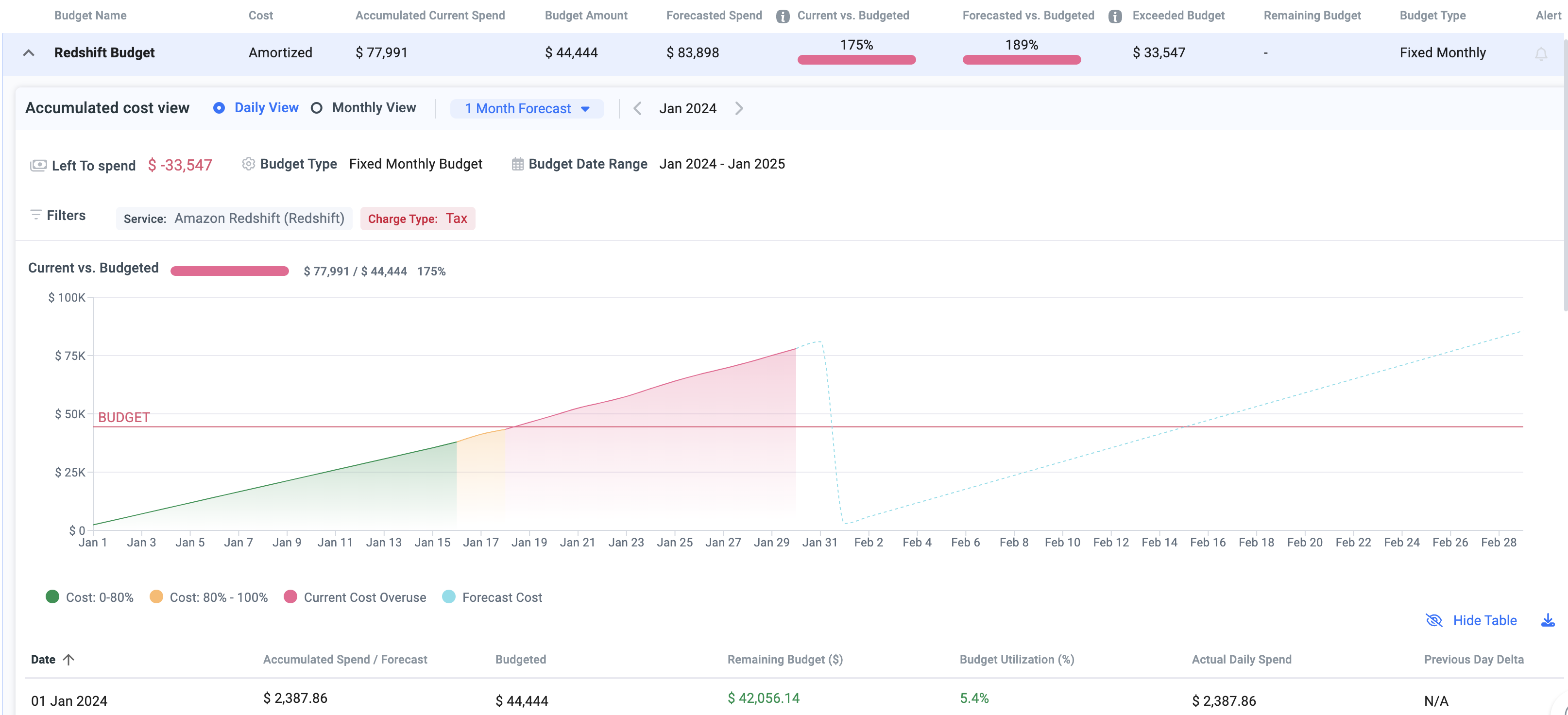
-
Choose the forecast period from one of the following:
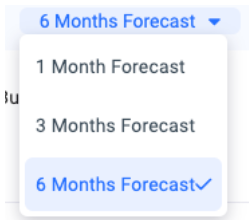
NoteIn the Daily View or Monthly View, you can also:
- Hide the table if needed, by clicking
- Download the table data into CSV format, by clicking
- Save the budget details as a dashboard panel, by clicking
. Enter the relevant details, and click Save.
👉If you're in the daily view, the panel will be saved to the dashboard as daily; if you're in the monthly view, it will be saved as monthly
Daily View
The Daily View, as shown in the section above, shows an accumulated daily view where each data point represents the daily cost.
The view also shows the following:
- The graph is colored according to the budget utilization, based on the following legend:

-
Using the month picker, you can navigate to the budget's past months and view the budget details.

- Planned Monthly Budget: You will be able to navigate to the budget past months.
- Fixed Month Budget: You will be able to navigate to the budget past months.
- Fixed Period Budget: You will be able to navigate to the budget for upcoming and past months.
-
The Current vs. Budgeted progress bar shows where your current monthly budget stands compared to your forecasted cost, monthly or period for a Fixed Period budget.

-
The Left To spend amount indicates the remaining budget.
-
Filters show the filters configured for the budget.

-
Budget Type shows the budget type configured for the budget.
-
Budget Date Range shows the configured budget date range.

-
You can view daily spending in the table and additional information such as Actual Daily Spend, Budget Utilization, and Previous Day Delta.
Monthly View
The Monthly View, as shown below, shows bars which represent the monthly budget.
The view also shows the following:
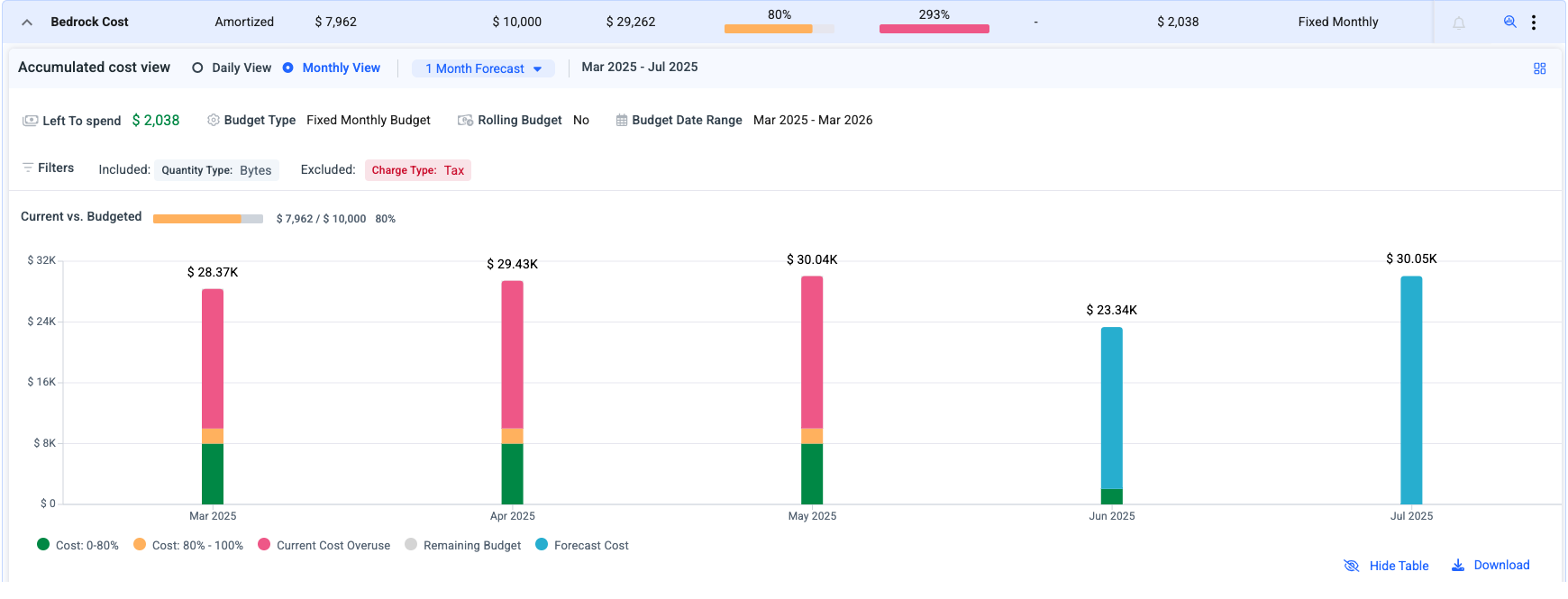
- The bar is colored according to the budget utilization, based on the following legend:

-
The monthly date range reflects the presented monthly budget range.

- The Current vs. Budgeted progress bar shows where your current monthly budget stands compared to your forecasted cost, monthly or period for a Fixed Period budget.

- The Left To spend amount indicates the remaining budget.
- Filters show the filters configured for the budget.
- Budget Type shows the budget type configured for the budget.
- You can view monthly spending in the table and additional information such as Budget Utilization and Remaining Budget.
Budget Alert
Budget Alert generic logic:
- Alert is being sent once the threshold is crossed.
- In case there are several alerts, each one should be triggered separately.
- Alert of updated budgets will be triggered from that point on.
Fixed Monthly and Planned Monthly - Monthly granularity alert logic:
- Alert is set for both Actual & Forecast conditions in a single alert:
- In case the Forecast has been triggered first, the Actual alert should be triggered as well.
- In case Actual has been triggered first, there’s no point in sending the Forecast alert as it will be crossed as well of course.
- In case only one condition was set- Actual or Forecast, it will be triggered individually.
Fixed Monthly and Planned Monthly - Daily granularity alert logic:
- Alert is set for both Actual & Forecast conditions in a single alert:
- In case the Forecast has been triggered first, the Actual alert should be triggered as well.
- In case Actual has been triggered first, there’s no point in sending the Forecast alert as it will be crossed as well of course.
- In case only one condition was set- Actual or Forecast, it will be triggered individually.
Fixed Period - Total Budget Period granularity alert logic:
- Alert is set for both Actual & Forecast conditions in a single alert:
- In case the Forecast has been triggered first, the Actual alert should be triggered as well.
- In case Actual has been triggered first, there’s no point in sending the Forecast alert as it will be crossed as well of course.
- Budget alerts can be trigger an action and send as notification view Slack and MS-teams, start a ticketing workflow to Jira, ServiceNow and Monday or trigger a webhook.
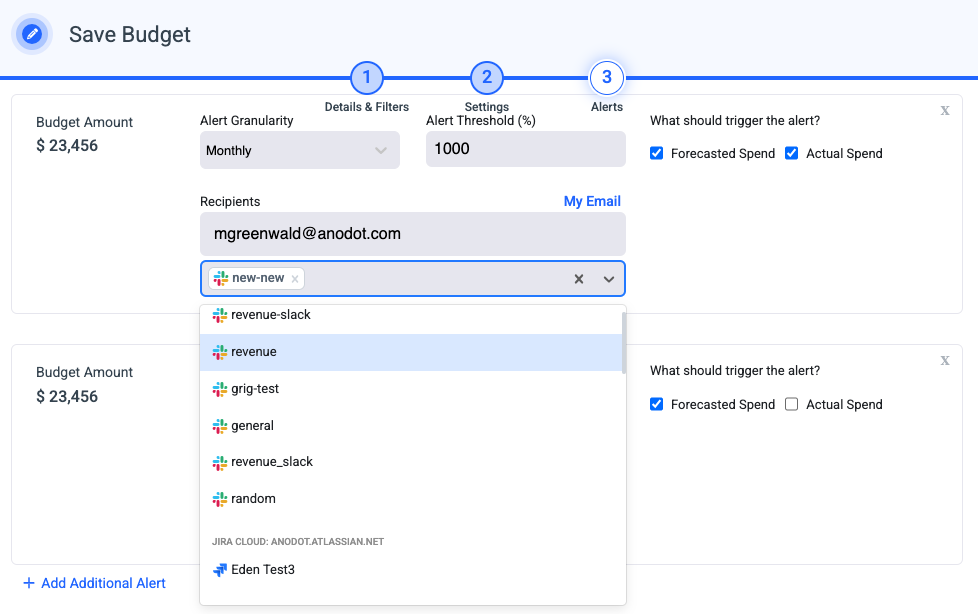
Alert Email Template
The emails are dynamic to incorporate daily, monthly, periodic actual, and forecasted alert types.
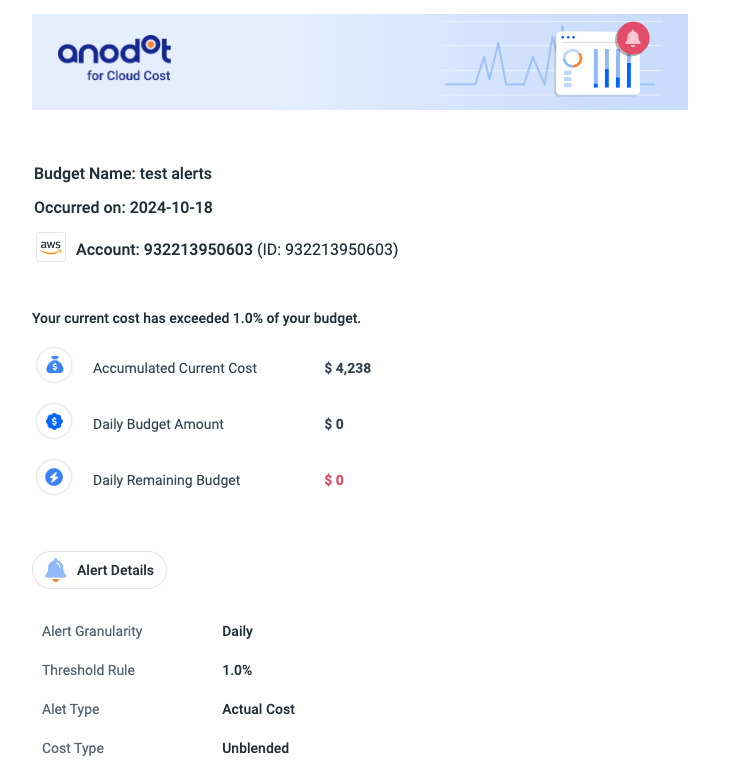
Budget Forecast Algorithm ✨
The Umbrella Cost Forecast platform is designed for business analysts and not for data scientists. To handle a large number of forecast tasks with no data science intervention the platform is autonomous, flexibly granular, and based on machine learning.
The Forecast platform is, more importantly, accurate. The platform's median monthly accuracy is 98.5%. This is measured by MAPE (mean absolute percentage error), an industry metric that defines the accuracy of forecasting methods.
Important things to know about the Forecast platform
- A minimum of two months of historical data is required to generate reliable forecasts.
- If the available cost data is less than half of the selected forecast period, the forecast may be inaccurate.
- The forecasting model uses 365 days of historical data (if available) to analyze past cost trends.
- The platform uses the first 85% of the data for training forecast models, and the last 15% of the data as a validation set.
- There are 2177 forecasted metrics.
- The platform removes transient anomalies as a preprocessing step, meaning any errors are not biased by anomalies.
Forecasted Spend calculation
To maintain forecast accuracy reflected in the forecast calculation in the Forecasted Spend measure in table and in the Forecasted Accumulated Cost in the chart, the algorithm excludes the last two days of potentially incomplete data—caused by billing data latency—and substitutes them with the forecasted daily cost for the sake of the forecast calculation.
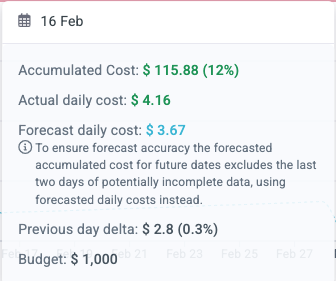
Rolling Budget
A rolling budget is a dynamic financial management strategy that continuously updates and extends the budget over a specific period, often monthly or quarterly. This approach involves moving the remaining budget from one month to the next, providing a more flexible and adaptive budgeting process.
-
Set the 'Apply Rolling Budget' on the Fixed Monthly or Planned Monthly budget creation.

-
A rolling budget indication will appear as part of the budget details window and appear as follow:

How a Rolling Budget Works
- Initial Budget Setup:
- At the start of the financial period, an initial budget is created based on projected revenues and expenses. This budget outlines the expected financial resources and allocations for various activities or departments.
- Monthly Review and Adjustment:
- At the end of each month, actual costs are reviewed against the budget. Any remaining budget is carried over to the next month.
- Remaining Budget Roll Over:
- Unspent funds from one month are not lost but are rolled over to the next month. This approach incentivizes efficient spending and helps avoid the rush to spend all allocated funds by the end of a fixed period.
Updated 3 months ago



